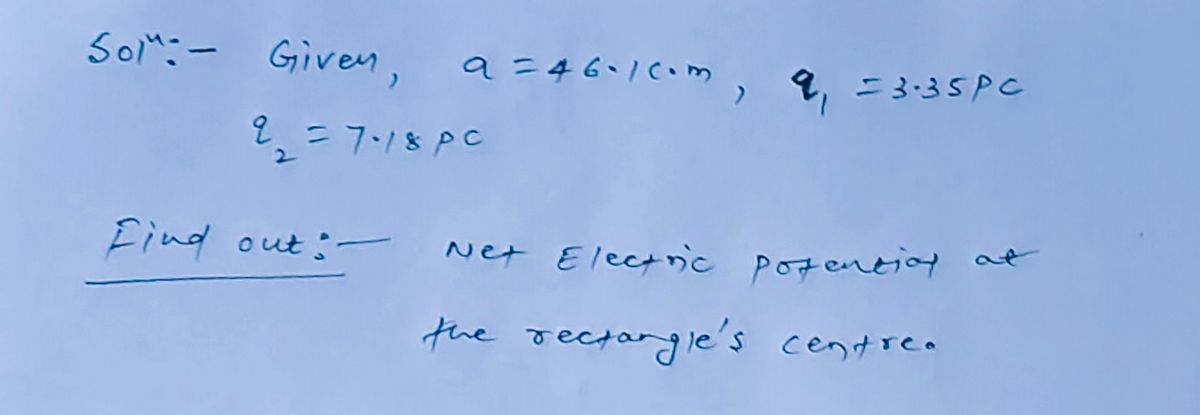The figure shows a rectangular array of charged particles fixed in place, with distance a = 46.1 cm and the charges shown as integer multiples of q1 = 3.35 pC and q2 = 7.18 pC. With V= 0 at infinity, what is the net electric potential at the rectangle's center? -Sq₁ Number i Units +29₁ 14 -9 +492 +492 +29 D
The figure shows a rectangular array of charged particles fixed in place, with distance a = 46.1 cm and the charges shown as integer multiples of q1 = 3.35 pC and q2 = 7.18 pC. With V= 0 at infinity, what is the net electric potential at the rectangle's center? -Sq₁ Number i Units +29₁ 14 -9 +492 +492 +29 D
Related questions
Question

Transcribed Image Text:The figure shows a rectangular array of charged particles fixed in place, with distance a = 46.1 cm and the charges shown as integer
multiples of q1 = 3.35 pC and q2 = 7.18 pC. With V= 0 at infinity, what is the net electric potential at the rectangle's center?
+291
+492
-9q₁
Number
tempt in Progress
i
Units
-
+492
a
+291
4
Expert Solution
Step 1

Step by step
Solved in 3 steps with 3 images
